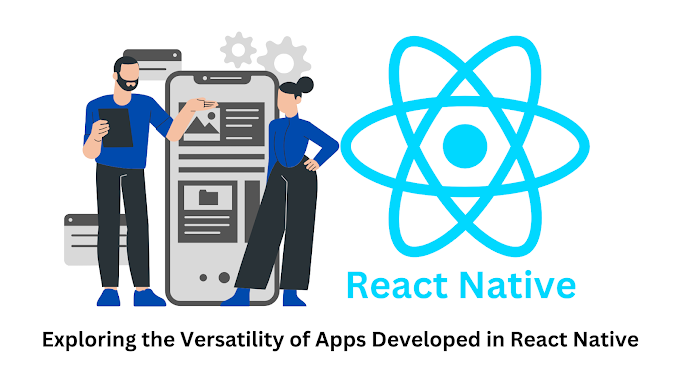Introduction
There are several types of SEO strategies that can help you achieve higher rankings and attract more organic traffic to your website. In this comprehensive guide, we will explore the main types of SEO and provide you with actionable insights to optimize your website effectively.
Now, let's delve into each type of SEO in detail and discover how you can leverage these strategies to enhance your website's visibility and drive more organic traffic.
1. On-Page SEO
On-page SEO involves optimizing the content and elements on your website to improve its visibility on search engines. It focuses on providing high-quality, informative content that meets users' search intent. By creating valuable and well-optimized content, you can attract both search engines and users to your website.
- 1.1. Importance of High-Quality Content
High-quality content is the cornerstone of on-page SEO. It should be informative, engaging, and unique. To ensure your content stands out and ranks well, it should solve a problem or provide valuable information that surpasses what other websites offer. Aim to create content that is ten times better than the competition, as recommended by SEO expert Rand Fishing.
- 1.2. Keyword Optimization
Keywords play a crucial role in on-page SEO. Conduct thorough keyword research to identify relevant keywords for your content. Incorporate these keywords naturally into your content, including the title, URL, headings, and throughout the body. However, avoid keyword stuffing, as it can negatively impact your rankings.
- 1.3. User Experience and Website Design
User experience is an essential aspect of on-page SEO. Ensure that your website is easy to navigate, with clear menus and intuitive design. Optimize your website's speed to provide a seamless browsing experience. Additionally, use descriptive alt text for images and optimize your website's structure for easy crawling by search engine bots.
2. Off-Page SEO
Off-page SEO refers to activities that occur outside of your website but contribute to its visibility and authority. The primary focus of off-page SEO is building high-quality backlinks and establishing a strong online presence.
- 2.1. Link-Building and Backlinks
Backlinks are crucial for off-page SEO. They act as votes of confidence from other websites and indicate to search engines that your content is valuable. Focus on acquiring backlinks from authoritative and relevant websites through strategies such as guest blogging, creating shareable content, and reaching out to influencers in your industry.
- 2.2. Social Media Signals
Social media platforms can significantly impact your off-page SEO efforts. When your content is shared and discussed on social media, it signals to search engines that it is engaging and valuable. Promote your content on social media platforms and encourage users to share and engage with it.
- 2.3. Building Relationships and Guest Blogging
Building relationships with influencers, bloggers, and journalists can help amplify your off-page SEO efforts. Engage with them by commenting on their posts, sharing their content, and offering valuable insights. Guest blogging on reputable websites can also provide valuable backlinks and exposure for your brand.
3. Technical SEO
Technical SEO focuses on optimizing the technical aspects of your website to improve its crawlability, indexability, and overall performance. By addressing technical issues, you can enhance user experience and make it easier for search engines to understand and rank your website.
- 3.1. Mobile-Friendliness and Responsive Design
With the rise of mobile usage, having a mobile-friendly website is crucial for SEO. Ensure that your website is responsive and adapts to different screen sizes. A mobile-friendly website not only improves user experience but also boosts your rankings on mobile search results.
- 3.2. Page Speed Optimization
Page speed is an important ranking factor for search engines and a key component of technical SEO. Optimize your website's load times by compressing images, minifying code, and leveraging browser caching. A fast-loading website not only improves user experience but also increases the likelihood of higher rankings.
- 3.3. HTML Optimization and Schema Markup
Optimizing your website's HTML elements can significantly impact your search engine visibility. Use proper title tags, meta descriptions, and header tags to provide search engines with relevant information about your content. Additionally, implement schema markup to help search engines understand the context and structure of your content.
4. Local SEO
For businesses with physical locations, local SEO is essential to attract local customers. Optimizing your website for local search queries can help you appear in local search results and drive targeted traffic to your business.
- 4.1. Claiming Google My Business Listing
Claiming your Google My Business listing is crucial for local SEO. Ensure that your listing is complete, accurate, and up-to-date with your business information, including name, address, phone number (NAP), and opening hours. Encourage customers to leave reviews on your Google Business Profile to improve your local search visibility.
- 4.2. NAP Consistency and Review Management
Consistency in your NAP information across various online directories and platforms is vital for local SEO. Ensure that your business name, address, and phone number are consistent across all listings. Actively manage and respond to customer reviews to build trust and enhance your local search rankings.
- 4.3. Optimizing for Local Keywords
Include location-specific keywords in your website content, meta tags, and headings to target local search queries effectively. Create location-specific landing pages and optimize your content to address the needs and preferences of your local audience.
5. App Store Optimization (ASO)
If you have a mobile app, optimizing it for app stores is crucial to increase its visibility and reach. App Store Optimization (ASO) focuses on improving your app's ranking in app store search results.
- 5.1. Optimizing App Title and Description
Craft a descriptive and compelling app title that includes relevant keywords to improve its discoverability. Write a concise and engaging app description that highlights its unique features and benefits. Incorporate relevant keywords naturally within the description to improve search visibility.
- 5.2. App Store Reviews and Ratings
Positive app reviews and ratings can significantly impact your app's visibility and credibility. Encourage satisfied users to leave reviews and ratings on the app store. Respond to user feedback, address issues promptly, and continuously improve your app based on user insights.
- 5.3. Link-Building for App Promotion
Promote your app through various channels and drive traffic to your app store listing. Build backlinks from relevant websites, leverage social media platforms, and collaborate with influencers to increase your app's visibility and downloads.
6. YouTube SEO
YouTube is the second-largest search engine, making YouTube SEO an essential strategy for video content creators. Optimizing your videos for YouTube search results can help you reach a wider audience and increase video views.
- 6.1. Creating High-Quality Video Content
Produce high-quality and engaging videos that provide value to your target audience. Focus on solving problems, answering questions, or entertaining viewers. The better your video content, the more likely it is to attract viewers, receive likes, comments, and shares, and rank higher in YouTube search results.
- 6.2. Optimizing Video Titles and Descriptions
Craft descriptive and keyword-rich video titles and descriptions to improve your video's visibility on YouTube. Include relevant keywords naturally and provide a compelling summary of your video's content. Utilize tags and categories to further optimize your video's discoverability.
- 6.3. Promoting and Building Engagement
Promote your videos on various platforms, including social media, your website, and other relevant websites or blogs. Encourage viewers to engage with your content by liking, commenting, and sharing. Building engagement signals to YouTube that your videos are valuable and can improve their rankings in search results.
By implementing these different types of SEO strategies, you can enhance your website's visibility, attract targeted traffic, and improve your rankings on search engine results pages. Remember that SEO is an ongoing process, and regularly reviewing and optimizing your strategies is key to long-term success.
In conclusion, a multi-faceted SEO approach that combines on-page, off-page, technical, local, ASO, and YouTube SEO is crucial for maximizing your website's visibility and driving organic traffic. By understanding and implementing these strategies effectively, you can stay ahead of the competition and achieve your SEO goals.
Remember, SEO is a dynamic field, and staying up-to-date with the latest trends and best practices is essential for ongoing success. Continuously monitor your website's performance, adapt your strategies as needed, and strive for continuous improvement. With a comprehensive SEO strategy, you can unlock the full potential of your website and achieve long-term growth and success.












0 Comments